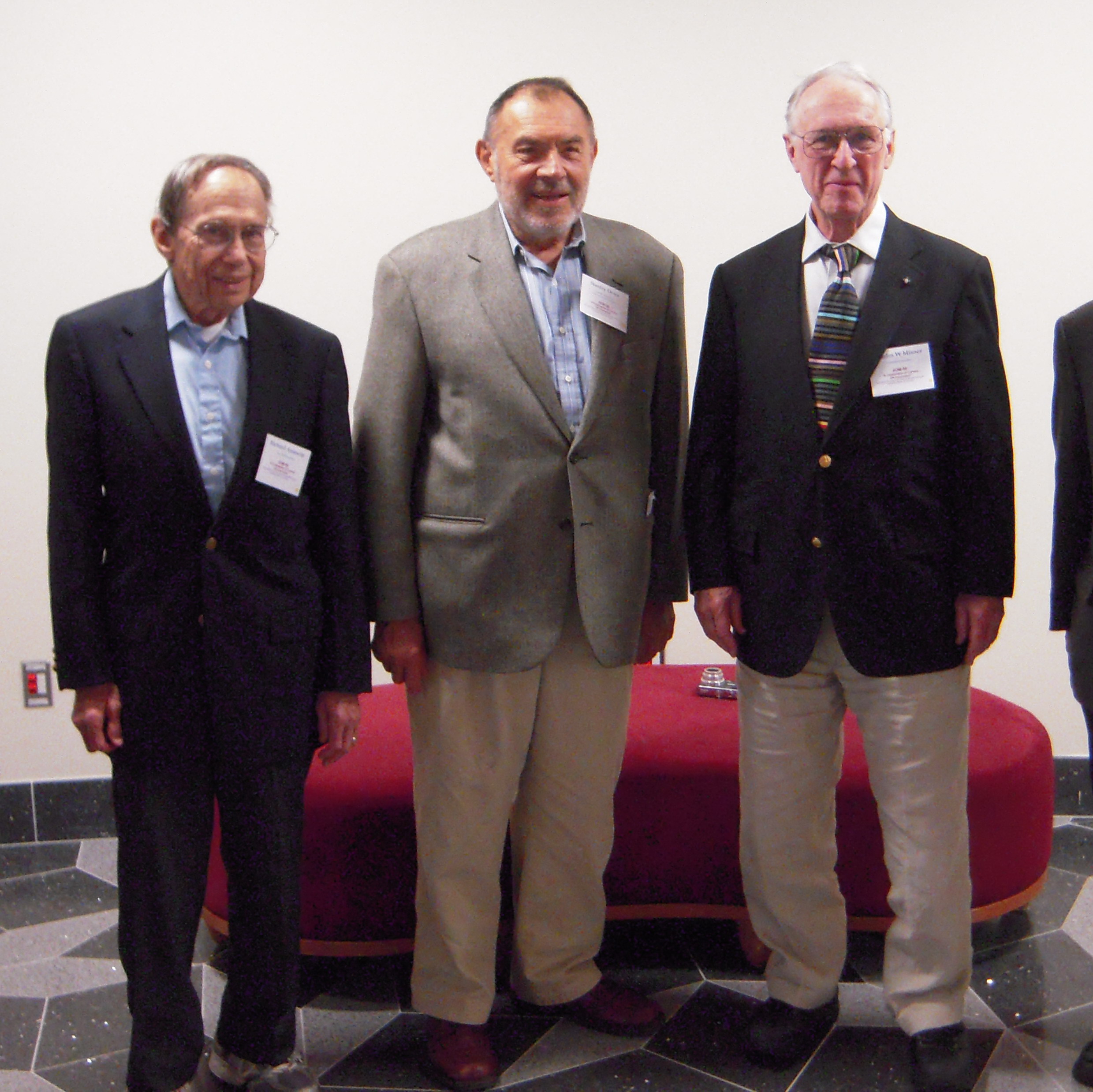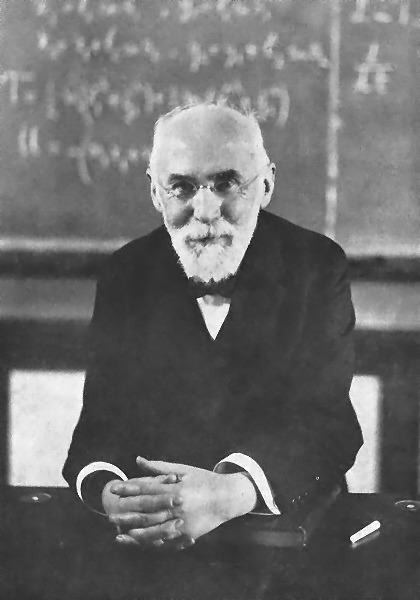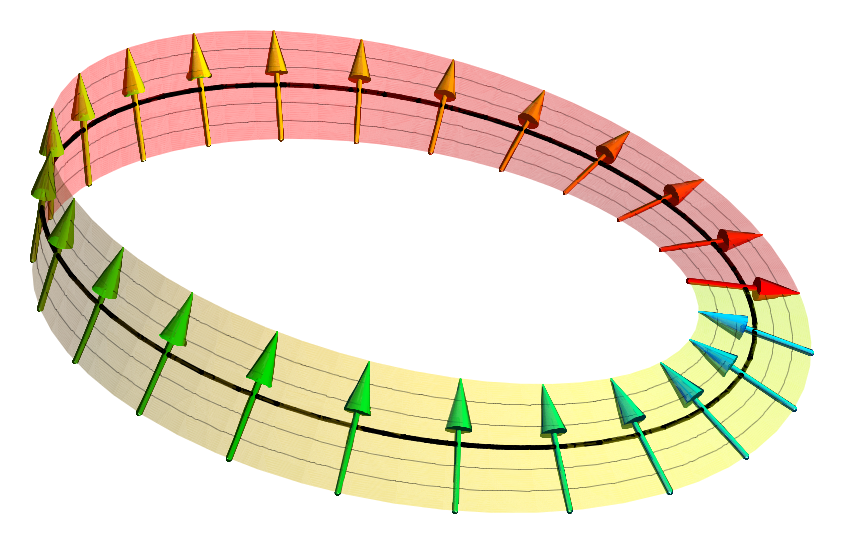|
Hamiltonian Constraint Of LQG
In the ADM formulation of general relativity one splits spacetime into spatial slices and time, the basic variables are taken to be the induced metric, q_ (x), on the spatial slice (the distance function induced on the spatial slice by the spacetime metric), and its conjugate momentum variable related to the extrinsic curvature, K^ (x), (this tells us how the spatial slice curves with respect to spacetime and is a measure of how the induced metric evolves in time). These are the metric canonical coordinates. Dynamics such as time-evolutions of fields are controlled by the Hamiltonian constraint. The identity of the Hamiltonian constraint is a major open question in quantum gravity, as is extracting of physical observables from any such specific constraint. In 1986 Abhay Ashtekar introduced a new set of canonical variables, Ashtekar variables to represent an unusual way of rewriting the metric canonical variables on the three-dimensional spatial slices in terms of a SU(2) gauge f ... [...More Info...] [...Related Items...] OR: [Wikipedia] [Google] [Baidu] |
ADM Formulation
The ADM formalism (named for its authors Richard Arnowitt, Stanley Deser and Charles W. Misner) is a Hamiltonian formulation of general relativity that plays an important role in canonical quantum gravity and numerical relativity. It was first published in 1959. The comprehensive review of the formalism that the authors published in 1962 has been reprinted in the journal ''General Relativity and Gravitation'', while the original papers can be found in the archives of ''Physical Review''. Overview The formalism supposes that spacetime is foliated into a family of spacelike surfaces \Sigma_t, labeled by their time coordinate t, and with coordinates on each slice given by x^i. The dynamic variables of this theory are taken to be the metric tensor of three-dimensional spatial slices \gamma_(t,x^k) and their conjugate momenta \pi^(t,x^k). Using these variables it is possible to define a Hamiltonian, and thereby write the equations of motion for general relativity in the form of Ha ... [...More Info...] [...Related Items...] OR: [Wikipedia] [Google] [Baidu] |
Spin Connection
In differential geometry and mathematical physics, a spin connection is a connection on a spinor bundle. It is induced, in a canonical manner, from the affine connection. It can also be regarded as the gauge field generated by local Lorentz transformations. In some canonical formulations of general relativity, a spin connection is defined on spatial slices and can also be regarded as the gauge field generated by local rotations. The spin connection occurs in two common forms: the ''Levi-Civita spin connection'', when it is derived from the Levi-Civita connection, and the ''affine spin connection'', when it is obtained from the affine connection. The difference between the two of these is that the Levi-Civita connection is by definition the unique torsion-free connection, whereas the affine connection (and so the affine spin connection) may contain torsion. Definition Let e_\mu^ be the local Lorentz frame fields or vierbein (also known as a tetrad), which is a set of ortho ... [...More Info...] [...Related Items...] OR: [Wikipedia] [Google] [Baidu] |
Quantum Operator
In physics, an operator is a function over a space of physical states onto another space of physical states. The simplest example of the utility of operators is the study of symmetry (which makes the concept of a group useful in this context). Because of this, they are very useful tools in classical mechanics. Operators are even more important in quantum mechanics, where they form an intrinsic part of the formulation of the theory. Operators in classical mechanics In classical mechanics, the movement of a particle (or system of particles) is completely determined by the Lagrangian L(q, \dot, t) or equivalently the Hamiltonian H(q, p, t), a function of the generalized coordinates ''q'', generalized velocities \dot = \mathrm q / \mathrm t and its conjugate momenta: :p = \frac If either ''L'' or ''H'' is independent of a generalized coordinate ''q'', meaning the ''L'' and ''H'' do not change when ''q'' is changed, which in turn means the dynamics of the particle are still the same e ... [...More Info...] [...Related Items...] OR: [Wikipedia] [Google] [Baidu] |
Momentum Representation
In Newtonian mechanics, momentum (more specifically linear momentum or translational momentum) is the product of the mass and velocity of an object. It is a vector quantity, possessing a magnitude and a direction. If is an object's mass and is its velocity (also a vector quantity), then the object's momentum is : \mathbf = m \mathbf. In the International System of Units (SI), the unit of measurement of momentum is the kilogram metre per second (kg⋅m/s), which is equivalent to the newton-second. Newton's second law of motion states that the rate of change of a body's momentum is equal to the net force acting on it. Momentum depends on the frame of reference, but in any inertial frame it is a ''conserved'' quantity, meaning that if a closed system is not affected by external forces, its total linear momentum does not change. Momentum is also conserved in special relativity (with a modified formula) and, in a modified form, in electrodynamics, quantum mechanics, quantum ... [...More Info...] [...Related Items...] OR: [Wikipedia] [Google] [Baidu] |
Spin Network
In physics, a spin network is a type of diagram which can be used to represent states and interactions between particles and fields in quantum mechanics. From a mathematical perspective, the diagrams are a concise way to represent multilinear functions and functions between representations of matrix groups. The diagrammatic notation can thus greatly simplify calculations. Roger Penrose described spin networks in 1971. Spin networks have since been applied to the theory of quantum gravity by Carlo Rovelli, Lee Smolin, Jorge Pullin, Rodolfo Gambini and others. Spin networks can also be used to construct a particular functional on the space of connections which is invariant under local gauge transformations. Definition Penrose's definition A spin network, as described in Penrose (1971),R. Penrose (1971a), "Angular momentum: an approach to combinatorial spacetime," in T. Bastin (ed.), ''Quantum Theory and Beyond'', Cambridge University Press (this paper can be found ... [...More Info...] [...Related Items...] OR: [Wikipedia] [Google] [Baidu] |
Lorentz Transformation
In physics, the Lorentz transformations are a six-parameter family of linear transformations from a coordinate frame in spacetime to another frame that moves at a constant velocity relative to the former. The respective inverse transformation is then parameterized by the negative of this velocity. The transformations are named after the Dutch physicist Hendrik Lorentz. The most common form of the transformation, parametrized by the real constant v, representing a velocity confined to the -direction, is expressed as \begin t' &= \gamma \left( t - \frac \right) \\ x' &= \gamma \left( x - v t \right)\\ y' &= y \\ z' &= z \end where and are the coordinates of an event in two frames with the origins coinciding at 0, where the primed frame is seen from the unprimed frame as moving with speed along the -axis, where is the speed of light, and \gamma = \left ( \sqrt\right )^ is the Lorentz factor. When speed is much smaller than , the Lorentz factor is negligibly different from ... [...More Info...] [...Related Items...] OR: [Wikipedia] [Google] [Baidu] |
Dirac Matrices
In mathematical physics, the gamma matrices, \left\ , also called the Dirac matrices, are a set of conventional matrices with specific anticommutation relations that ensure they generate a matrix representation of the Clifford algebra Cl1,3(\mathbb). It is also possible to define higher-dimensional gamma matrices. When interpreted as the matrices of the action of a set of orthogonal basis vectors for contravariant vectors in Minkowski space, the column vectors on which the matrices act become a space of spinors, on which the Clifford algebra of spacetime acts. This in turn makes it possible to represent infinitesimal spatial rotations and Lorentz boosts. Spinors facilitate spacetime computations in general, and in particular are fundamental to the Dirac equation for relativistic spin- particles. In Dirac representation, the four contravariant gamma matrices are :\begin \gamma^0 &= \begin 1 & 0 & 0 & 0 \\ 0 & 1 & 0 & 0 \\ 0 & 0 & -1 & 0 \\ 0 & 0 & 0 & - ... [...More Info...] [...Related Items...] OR: [Wikipedia] [Google] [Baidu] |
Lorentz Group
In physics and mathematics, the Lorentz group is the group of all Lorentz transformations of Minkowski spacetime, the classical and quantum setting for all (non-gravitational) physical phenomena. The Lorentz group is named for the Dutch physicist Hendrik Lorentz. For example, the following laws, equations, and theories respect Lorentz symmetry: * The kinematical laws of special relativity * Maxwell's field equations in the theory of electromagnetism * The Dirac equation in the theory of the electron * The Standard Model of particle physics The Lorentz group expresses the fundamental symmetry of space and time of all known fundamental laws of nature. In small enough regions of spacetime where gravitational variances are negligible, physical laws are Lorentz invariant in the same manner as special relativity. Basic properties The Lorentz group is a subgroup of the Poincaré group—the group of all isometries of Minkowski spacetime. Lorentz transformations are, pre ... [...More Info...] [...Related Items...] OR: [Wikipedia] [Google] [Baidu] |
Spinor
In geometry and physics, spinors are elements of a complex vector space that can be associated with Euclidean space. Like geometric vectors and more general tensors, spinors transform linearly when the Euclidean space is subjected to a slight ( infinitesimal) rotation. Unlike vectors and tensors, a spinor transforms to its negative when the space is continuously rotated through a complete turn from 0° to 360° (see picture). This property characterizes spinors: spinors can be viewed as the "square roots" of vectors (although this is inaccurate and may be misleading; they are better viewed as "square roots" of sections of vector bundles – in the case of the exterior algebra bundle of the cotangent bundle, they thus become "square roots" of differential forms). It is also possible to associate a substantially similar notion of spinor to Minkowski space, in which case the Lorentz transformations of special relativity play the role of rotations. Spinors were introduced in ge ... [...More Info...] [...Related Items...] OR: [Wikipedia] [Google] [Baidu] |
Scalar Field
In mathematics and physics, a scalar field is a function associating a single number to every point in a space – possibly physical space. The scalar may either be a pure mathematical number ( dimensionless) or a scalar physical quantity (with units). In a physical context, scalar fields are required to be independent of the choice of reference frame, meaning that any two observers using the same units will agree on the value of the scalar field at the same absolute point in space (or spacetime) regardless of their respective points of origin. Examples used in physics include the temperature distribution throughout space, the pressure distribution in a fluid, and spin-zero quantum fields, such as the Higgs field. These fields are the subject of scalar field theory. Definition Mathematically, a scalar field on a region ''U'' is a real or complex-valued function or distribution on ''U''. The region ''U'' may be a set in some Euclidean space, Minkowski space, or mo ... [...More Info...] [...Related Items...] OR: [Wikipedia] [Google] [Baidu] |
Canonical Transformation
In Hamiltonian mechanics, a canonical transformation is a change of canonical coordinates that preserves the form of Hamilton's equations. This is sometimes known as form invariance. It need not preserve the form of the Hamiltonian itself. Canonical transformations are useful in their own right, and also form the basis for the Hamilton–Jacobi equations (a useful method for calculating conserved quantities) and Liouville's theorem (itself the basis for classical statistical mechanics). Since Lagrangian mechanics is based on generalized coordinates, transformations of the coordinates do not affect the form of Lagrange's equations and, hence, do not affect the form of Hamilton's equations if we simultaneously change the momentum by a Legendre transformation into P_i=\frac. Therefore, coordinate transformations (also called point transformations) are a ''type'' of canonical transformation. However, the class of canonical transformations is much broader, since the old generali ... [...More Info...] [...Related Items...] OR: [Wikipedia] [Google] [Baidu] |
Homogeneous Function
In mathematics, a homogeneous function is a function of several variables such that, if all its arguments are multiplied by a scalar, then its value is multiplied by some power of this scalar, called the degree of homogeneity, or simply the ''degree''; that is, if is an integer, a function of variables is homogeneous of degree if :f(sx_1,\ldots, sx_n)=s^k f(x_1,\ldots, x_n) for every x_1, \ldots, x_n, and s\ne 0. For example, a homogeneous polynomial of degree defines a homogeneous function of degree . The above definition extends to functions whose domain and codomain are vector spaces over a field : a function f : V \to W between two -vector spaces is ''homogeneous'' of degree k if for all nonzero s \in F and v \in V. This definition is often further generalized to functions whose domain is not , but a cone in , that is, a subset of such that \mathbf\in C implies s\mathbf\in C for every nonzero scalar . In the case of functions of several real variables and re ... [...More Info...] [...Related Items...] OR: [Wikipedia] [Google] [Baidu] |




